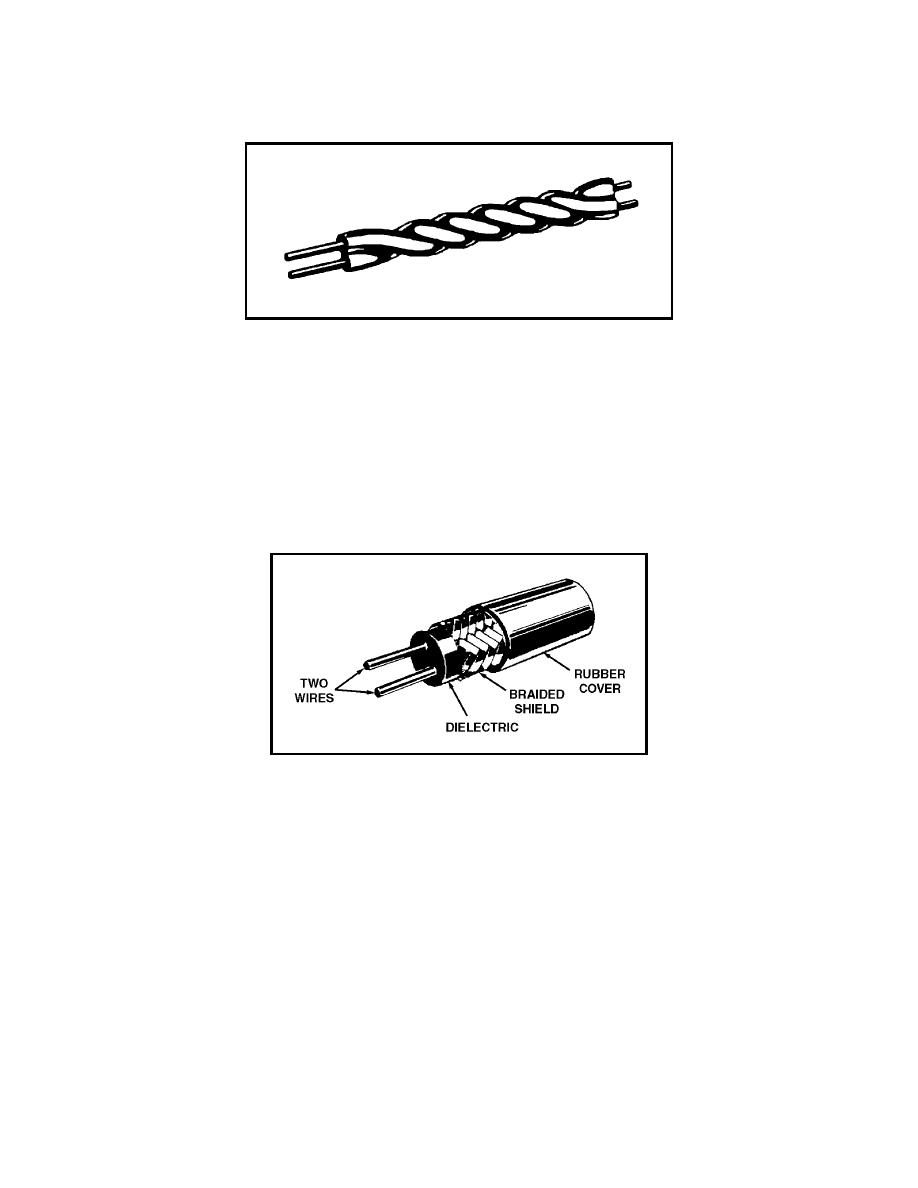
TC 9-64 _________________________________________________________________________
Figure 3-4. Twisted Pair
Shielded Pair
3-11. The shielded pair, shown in figure 3-5 consists of parallel conductors
separated from each other and surrounded by a solid dielectric. The
conductors are contained within braided copper tubing that acts as an
electrical shield. The assembly is covered with a rubber or flexible
composition coating that protects the line from moisture and mechanical
damage. Outwardly, it looks much like the power cord of a washing machine
or refrigerator.
Figure 3-5. Shielded Pair
3-12. The principal advantage of the shielded pair is that the conductors are
balanced to ground; that is, the capacitance between the wires is uniform
throughout the length of the line. This balance is due to the uniform spacing
of the grounded shield that surrounds the wires along their entire length.
The braided copper shield isolates the conductors from stray magnetic fields.
Coaxial Lines
3-13. There are two types of coaxial lines: rigid (air) and flexible (solid)
coaxial line. The physical construction of both types is basically the same;
that is, each contains two concentric conductors.
3-14. The rigid coaxial line consists of a central, insulated wire (inner
conductor) mounted inside a tubular outer conductor. This line is shown in
figure 3-6. In some applications, the inner conductor is also tubular.
Insulating spacers or beads at regular intervals insulates the inner conductor
3-4


 Previous Page
Previous Page
